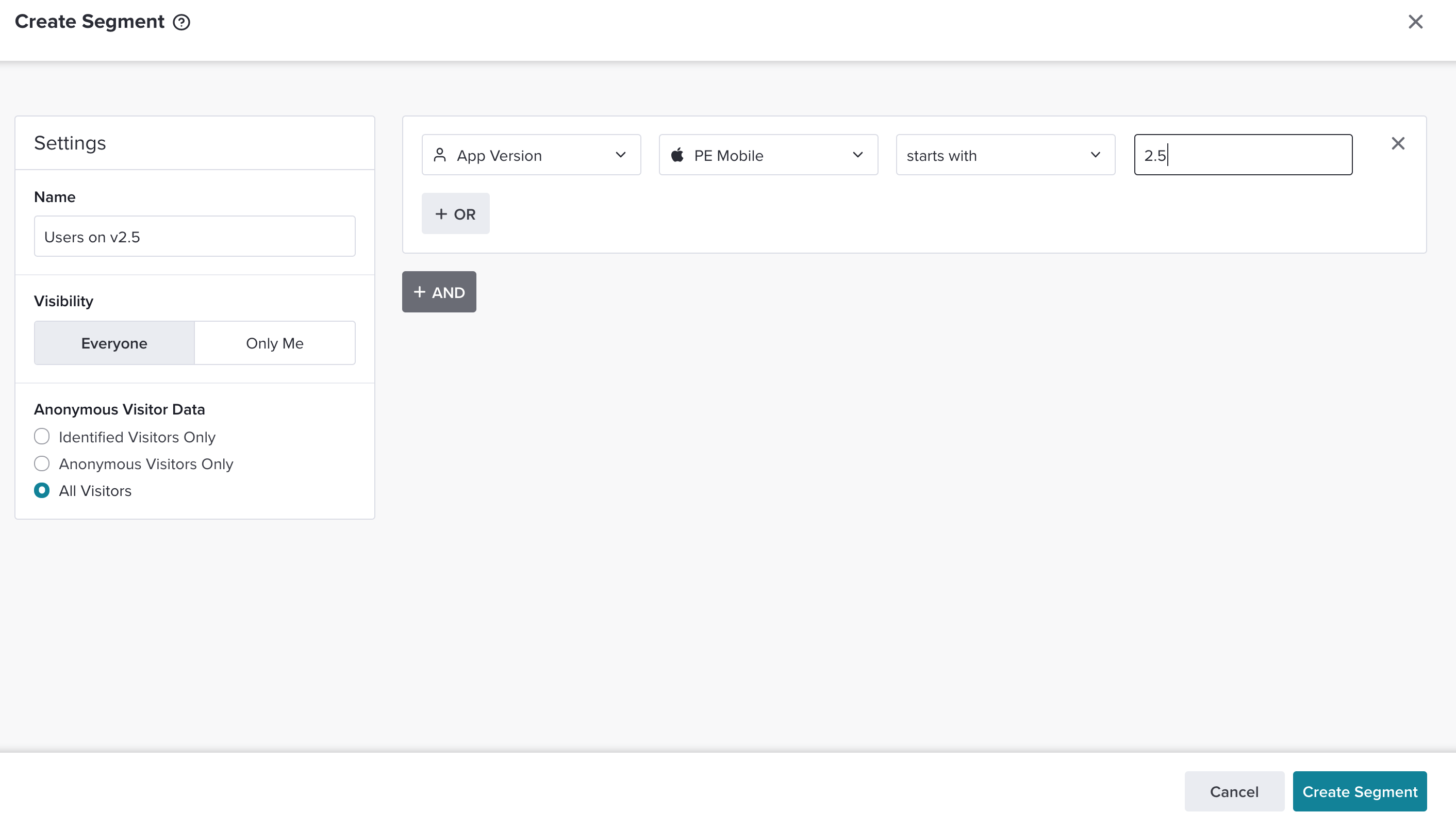As creators of mobile apps, we want to give our customers the best possible experience. Very often, this means ensuring users are accessing the latest and greatest versions of our apps that contain those all-important bug fixes and new features.
However, one of the unique challenges of building mobile apps is that customers will upgrade to new app versions at different times, leaving us to support multiple versions in the wild. While this is an inevitable part of working with mobile apps, there are times when having users on older (or buggy!) app versions can start to cause major problems not only for you, but your customers, too.
In the first of our new three-part webinar series on in-app guidance for mobile apps, we offered three simple steps to ensure you are supporting the right app versions, plus how to use in-app messaging to help customers upgrade with ease. Below, we outline some of the biggest takeaways from the session.
Why old app versions are bad for you and your users
When customers are using older versions of your apps, you inevitably get more support tickets, requests for help, and frustrated users. Instead of working on new features and improvements, your teams will have to spend their time addressing issues that you may have already solved in later app versions. Asking individual users to upgrade as problems occur takes time, so investing in a way to encourage users to upgrade in-app–and at scale–allows your team to focus on projects that truly add value.
Creating a clear process for upgrading users doesn’t just benefit you and your team–it’s better for your customers, too. Instead of waiting for users to hit issues with your older app versions, you can leverage targeted, in-app messages to proactively provide a smooth and easy transition. This way, you can explain the benefits of your latest version and link customers straight to the app store where they can upgrade in seconds.
Wondering where to start? Here’s our three-step process for overcoming your app version challenges.
Step #1: Use data to make smart upgrade decisions
Before you start thinking about contacting users to get them to upgrade, it’s important to understand the potential impact across your customer base. For example, if you have ten users on an old version and a very low support load, it might not be worth encouraging them to upgrade just yet. Alternatively, if you have a huge swath of users that are missing out on important fixes or new features, then it’s time to take action.
Pendo’s dashboard widget showing how many users you have across your mobile app versions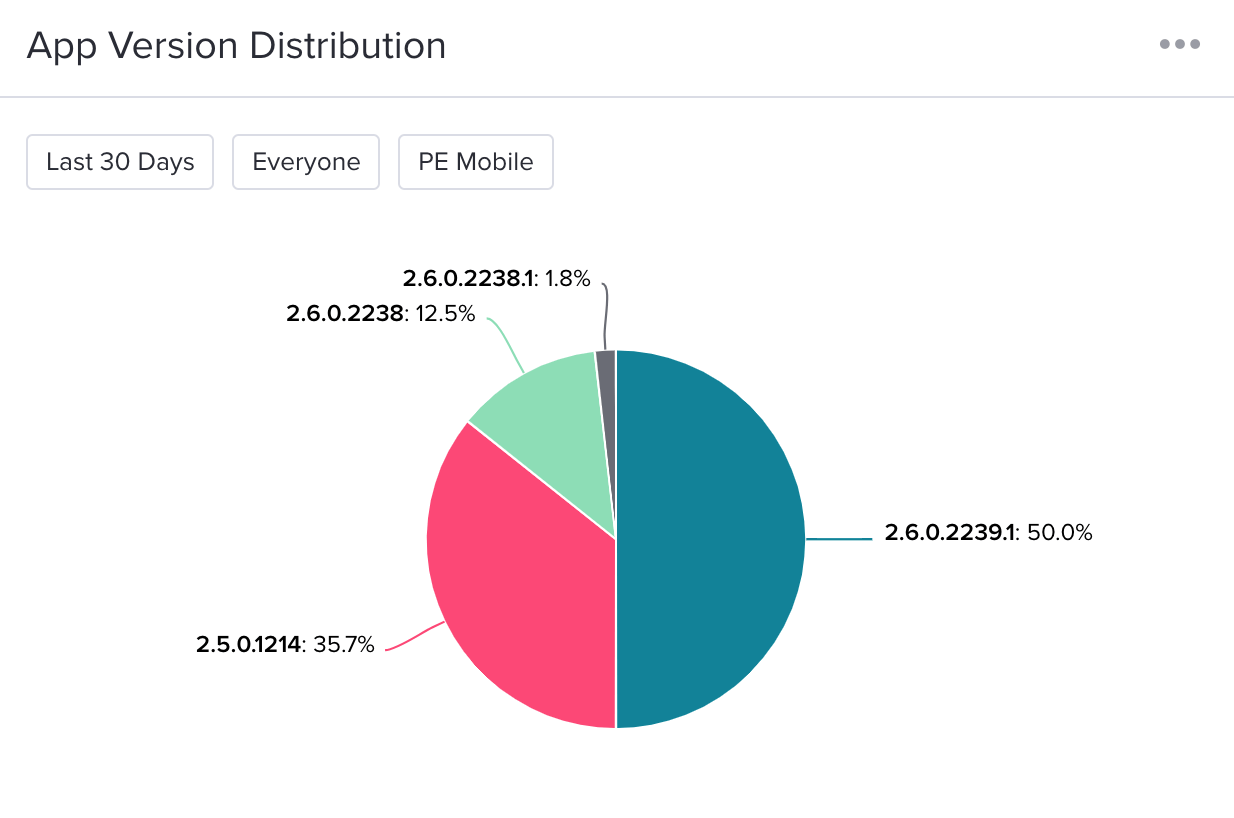
Pendo’s dashboard widget showing how many users you have across your mobile app versions
In Pendo, you can easily access this data using the “App Version Distribution” dashboard widget. You’ll be able to see exactly what percentage of (and how many) customers are using each of your mobile application versions.
Step #2: Target your audience to avoid unhappy customers
Once you know the app version you need to encourage customers to upgrade from, you need to know exactly which users to target with your in-app upgrade message. This is when it’s important to be considerate of customers’ time and target in-app messages carefully, ensuring the content is relevant and valuable. Opening an app only to be bombarded with irrelevant in-app communications is a very poor experience and can reflect badly on your app and company as a whole.
In Pendo, you can create a Segment of customers based on the app version they are using. In the example below, we are creating a segment of users on version 2.5 of our mobile app. Once we’ve created the Segment, we can use it to send an in-app message to just those users.
Create a ‘segment’ to target your in-app messages to users on a particular app version
Step #3: Use in-app messaging to make upgrading a joy
Now that you know which app version you want to upgrade users from and exactly which users to target, the final step is to create an in-app message to help them upgrade to your latest app version.
In Pendo, you can use Guides to deliver in-app messages without the need for any engineering resources. When creating your guide, make sure that it:
-
- Clearly states the benefits of upgrading to the latest version of your app. Customers need to understand why upgrading will be better for them.
- Has a clear call to action. One of the guide buttons should take the customer straight to the appropriate App Store so they can upgrade quickly.
- Can be quickly dismissed or snoozed. Unless you have an urgent situation where you need to force customers to upgrade, make sure there is a “Close” or “Dismiss” button on the guide. In Pendo, customers can also choose to add the ability to snooze guides. Adding these options for customers puts them in control and ultimately creates a better upgrade experience.
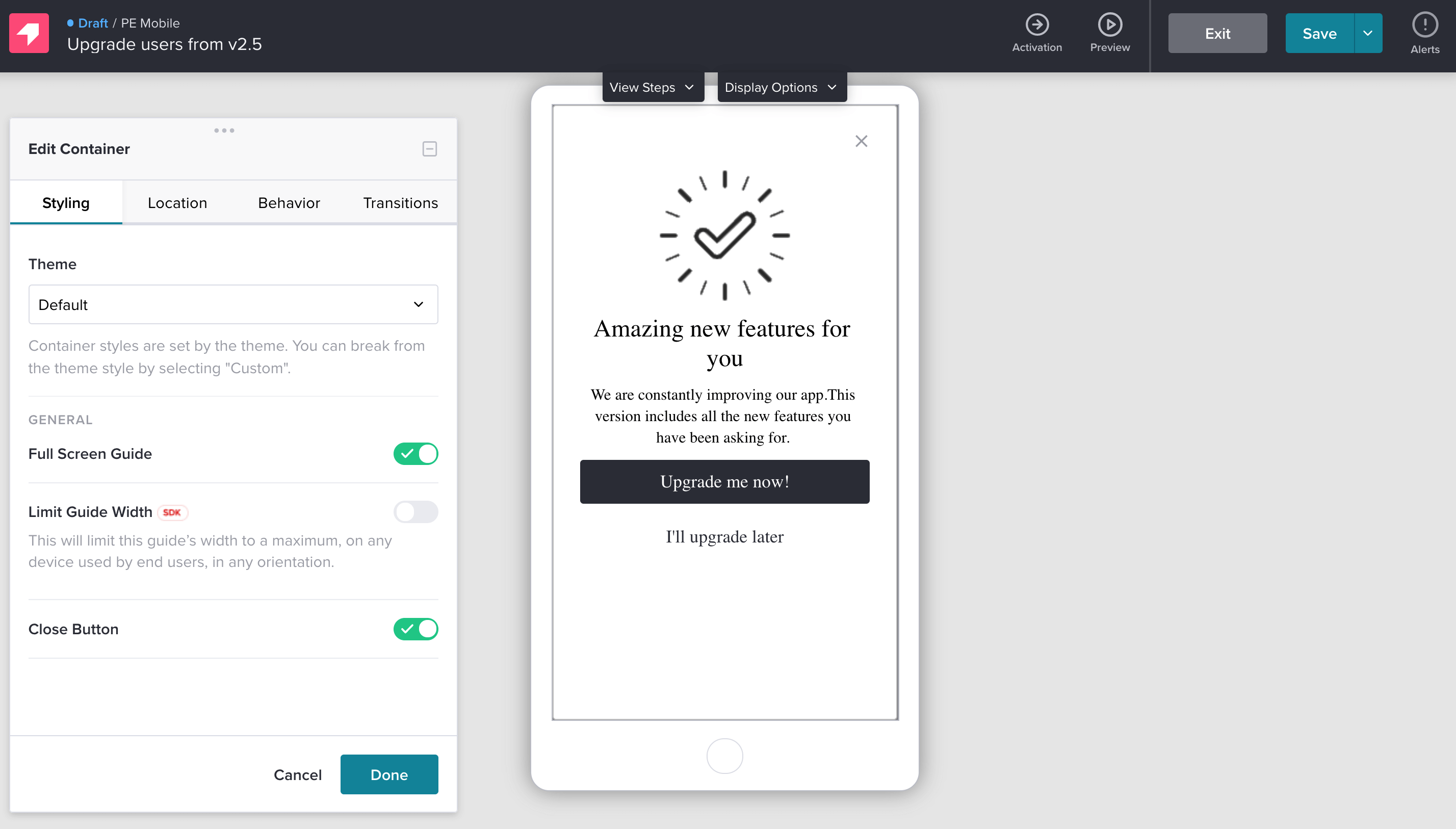
Build a guide to send an in-app message to your customers
Once you have the copy and buttons sorted, the last step is to select the Segment that you previously created. Remember that this Segment allows you to only show the Guide to the users that are on your old app version.
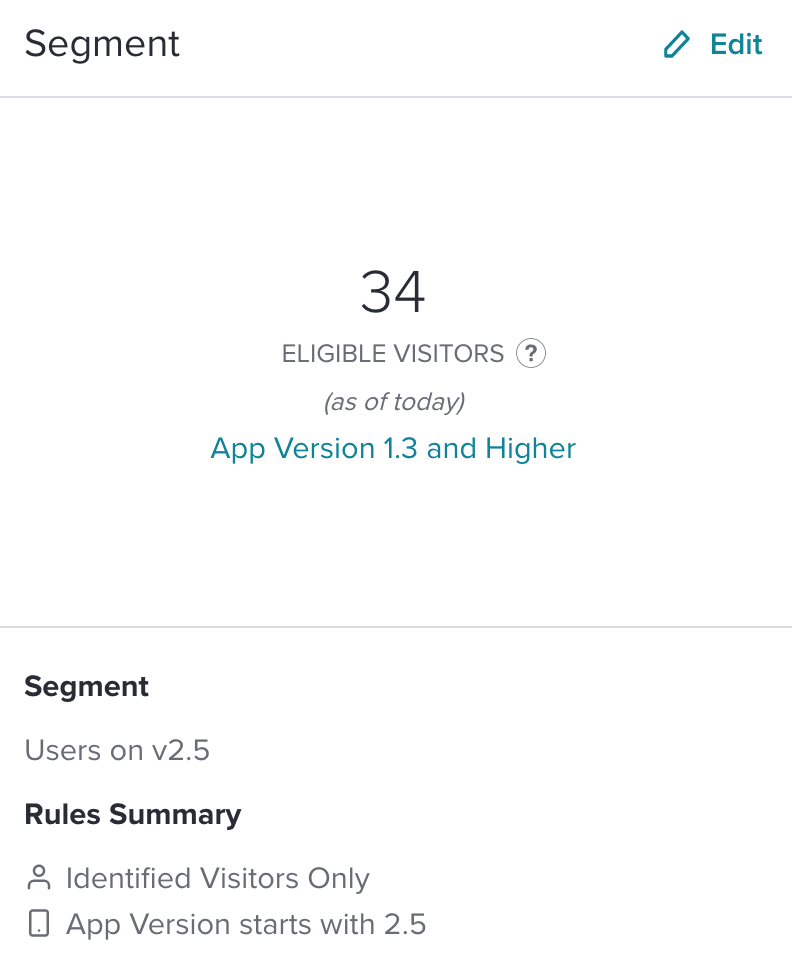
Choose the segment so you only target the customers you want to upgrade
If you want to limit this upgrade message to a certain period of time, you can also choose start and end times for your guide.
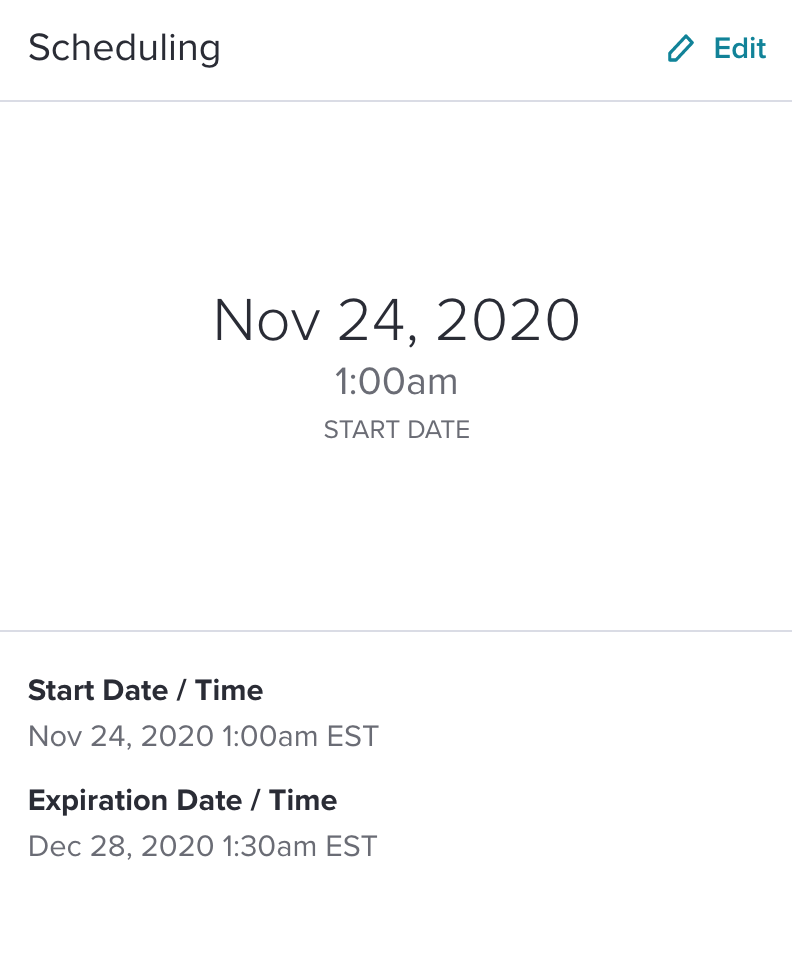
Easily pick start and end dates for the in-app guide
The next time you need to encourage customers to upgrade to your latest app version, follow this simple three-step process to ensure a smooth transition for your customers and your own team. If you’re looking for more mobile app tips, join us for our next two webinars on mobile best practices:
- How to create beautiful in-app onboarding to delight your users: Tuesday, 12/15 @ 11:30am ET
- The secret formula for successfully launching mobile features to boost your app store ratings: Wednesday, 1/20 @ 11:30am ET
And if you want to watch the full session on overcoming mobile app version challenges, check out the recording here:
